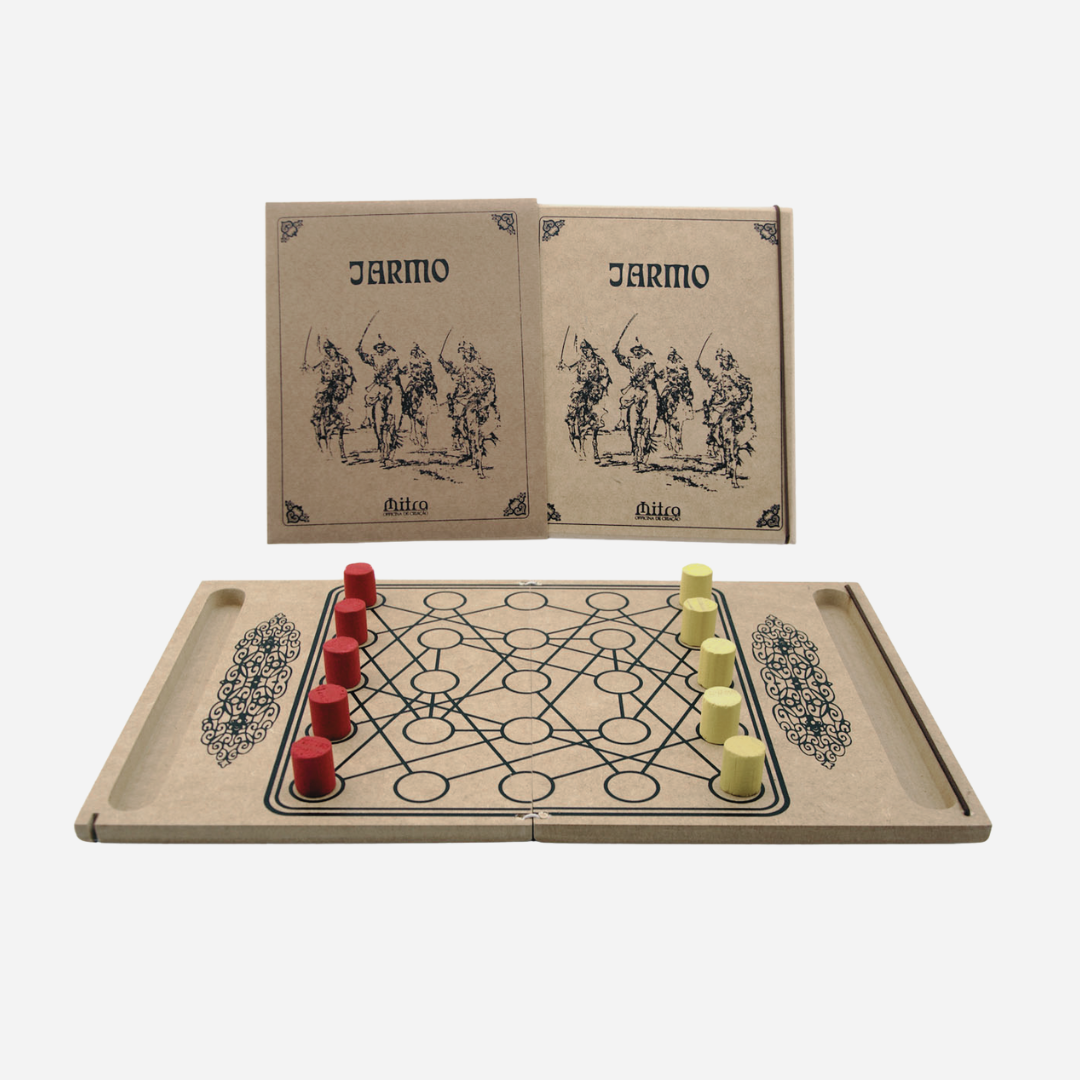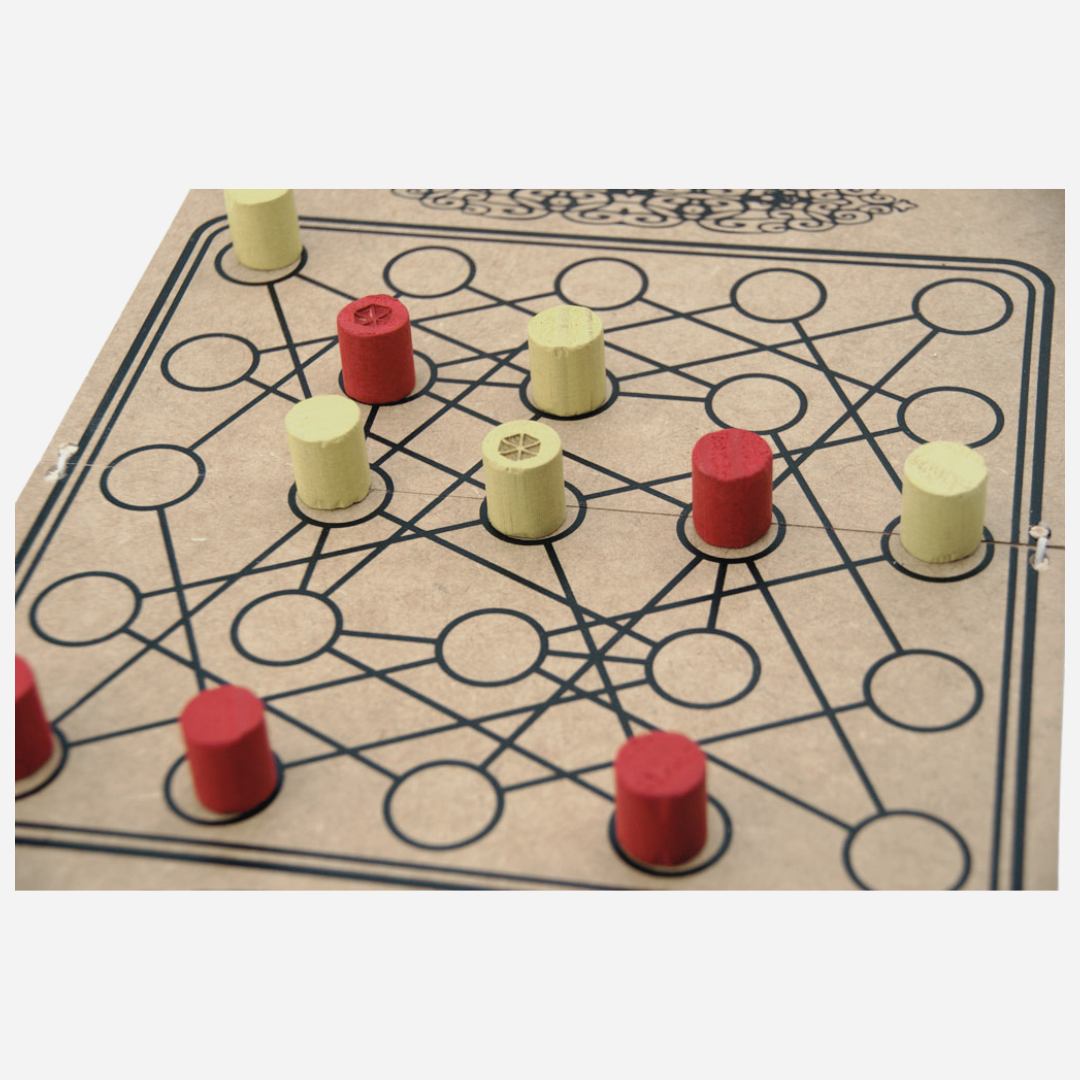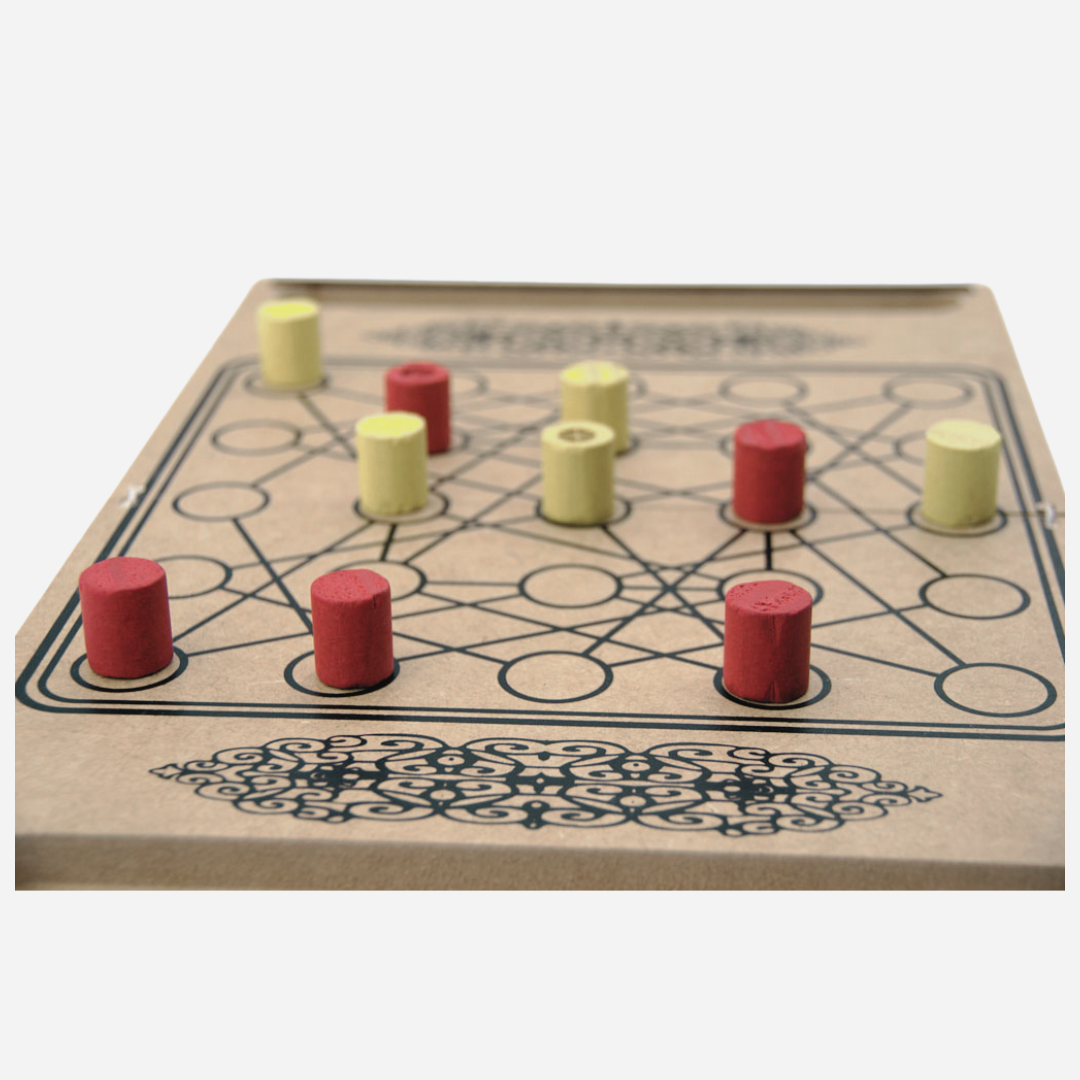Mitra
Jarmo - The legendary strategy game from ancient Eurasia
Jarmo - The legendary strategy game from ancient Eurasia
Low stock
Couldn't load pickup availability
Description : Discover the fascinating world of Jarmo, an abstract strategy game for two players, deeply rooted in the legends of ancient Tatar and Polish culture. Batu Khan, the grandson of Genghis Khan, reportedly carried a copy of this game with him on his military campaigns and played a game before each battle to prepare and strengthen his warlike disposition.
A variant of this ancient Tatar game called Jasir Jarmo is still played today in parts of Poland and other Eastern European countries. The basic structure of the game remains the same despite several regional variants. Jasir means "archer" in Tatar, and the pieces used in the game are called archers.
A fascinating aspect of Jarmo is the asymmetrical game board, which offers each player a unique perspective. The connecting lines between the squares are not the same on each side of the board, resulting in an exciting and challenging gaming experience.
characteristics
characteristics
1 MDF board with high-quality print
5 light wooden figures and 5 black wooden figures
Instructions with rules and game instructions
Recommended for children ages 8 and up
Ideal for 2 players.
delivery information
delivery information
Our products are shipped via DHL. Shipping takes place as quickly as possible. 2-5 working days. Shipping costs are calculated at checkout.
Mass
Mass
21 x 26 x 3 cm
Application / Instructions
Application / Instructions
Jarmo
An old Tatar game - legend has it that Batu Khan always played the game before going to war to get in the mood.
come.
starting position and goal
Jarmo is played on a 5x5 board. Each player starts with 5 figures - archers - which are placed on their own home row.
The aim of the game is to reach the opponent's base row with as many archers as possible. The winning strategy is much more complex than it may seem at first glance; it is not enough to simply push the pieces forward. As in Tank Battle, the player with more points at the end wins.
The movement of the figures:
An archer can move to a circle that is connected to a line from him. Below is an archer before and after his move. If one of your archers reaches the opponent's home row, he remains there until the end of the game unless he is captured.
How to capture opposing pieces:
If an archer reaches a square occupied by an opposing figure, the opposing figure is immediately defeated. An archer can only defeat one opposing figure (marked with a black/white dot). It is important to know which archers have already defeated enemies when the throwing rule comes into effect (see below).
How to end the game:
The game ends when a player reaches the opponent's base row with all of his archers. In this case, the points achieved are counted and the player with the most points wins. If the players have the same number of points, the game ends in a draw.
Points are calculated as follows:
2 points for an archer standing on the opponent's back row.
1 point for an archer standing somewhere else.
Other important rules:
If one of your archers reaches the opponent's base row and has previously defeated an opponent's archer - so he is "marked" - the player can return any archer to his own base row. To do this, click on the opponent's first defeated piece and then select the relevant square in the first row. Only then is the archer "unmarked" and can no longer be used for "conquests".
It is not allowed to repeat moves three times in a row.
Split
- Fast support for questions
- 30-day return policy
- Fast shipping with DHL






